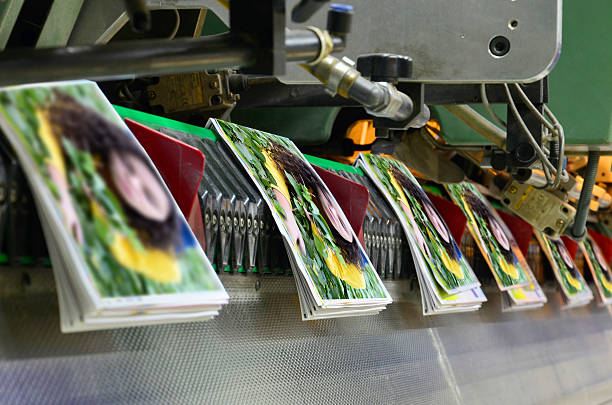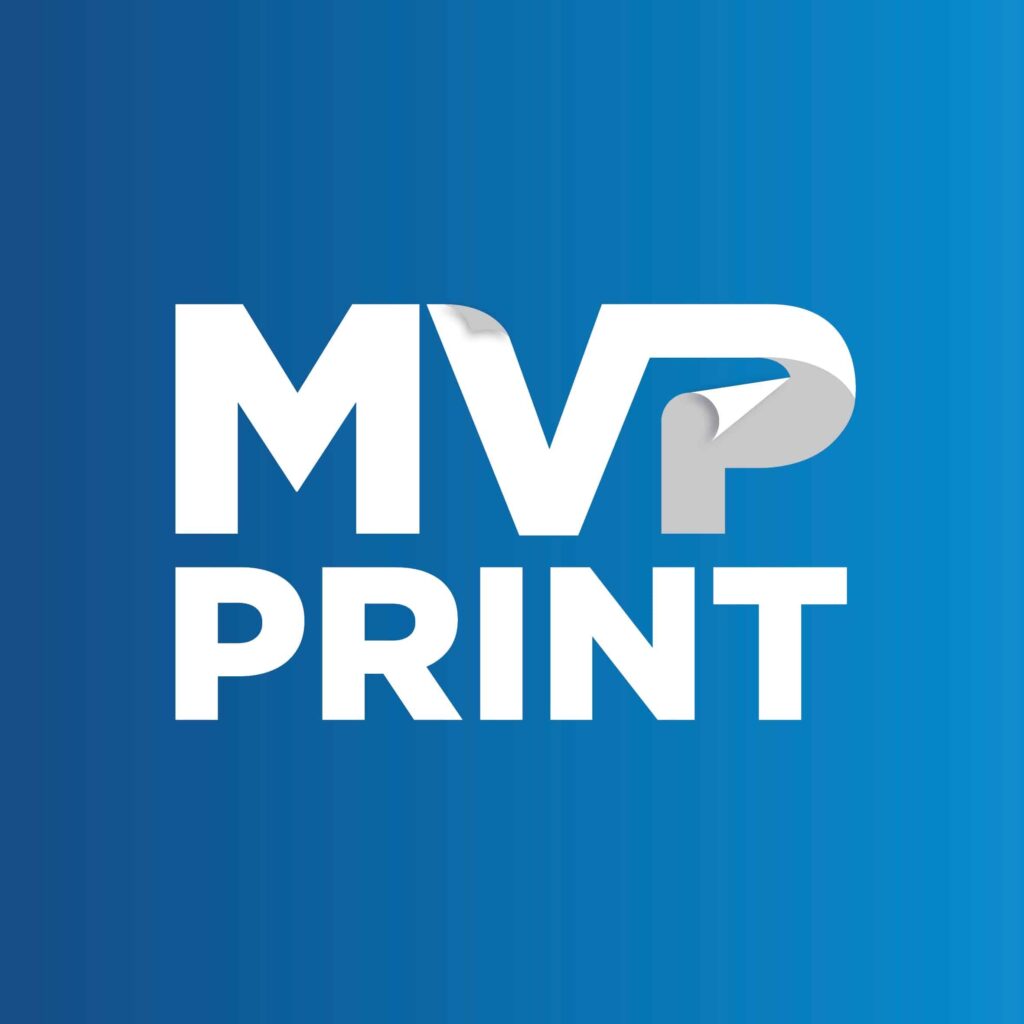
The debate between print and digital media is ongoing and interesting. Print media, like magazines and newspapers, has been key for centuries, with magazine printing offering a hands-on experience that touches our senses and builds trust. On the other hand, digital media, including websites and social media, has changed how we get information. It’s all about convenience and easy access. This article will look into both print and digital media. We’ll talk about their good and bad points. We’ll also look at print on demand magazines as a green alternative to traditional magazines. By understanding the differences between print on demand and traditional magazines, readers will see how the media world is changing. They’ll learn what influences our choices.
What are Print on Demand Magazines?
Print on demand magazines use digital tech to make and send magazines only when they’re ordered. This is different from old ways of publishing magazines, which needed a lot of money upfront and were hard to manage. With this new method, there’s no need to print and store magazines before they’re sold. Print on demand magazines leverage magazine printing services to offer a cost-effective and efficient solution for publishers.
Definition and Overview of Print on Demand Magazines
These magazines are made and sent out as needed, meeting what readers want. This approach helps avoid the costs and harm to the planet from making too many magazines. Thanks to digital printing, print on demand magazines are cheaper and better for the environment than traditional ones. Digital printing technology allows for easy management and customization of magazine files, ensuring each issue meets reader demands.
Benefits of Print on Demand Magazines
- Cost-effective: Print on demand saves money by not needing big upfront costs or managing inventory.
- Sustainable: Making magazines only when ordered cuts down on waste and helps the environment.
- Customizable: Publishers can make magazines just how readers like them, making it more personal.
- Flexible: It’s easy to change or add to magazines quickly to keep up with trends and what readers want.
- Accessible: Print on demand lets magazines be made in ways that help readers with vision problems or disabilities.
Using print on demand, publishers can save money, be kinder to the planet, and make magazines more personal and engaging. Printed magazines created through print on demand offer a tangible and engaging experience for readers, enhancing their connection to the content. This new way of making magazines is changing the industry, offering a fresh and adaptable approach.
Traditional Magazine Publishing Process

The traditional magazine publishing process is complex and requires a lot of effort. It begins with the editorial team creating engaging content. Then, the design team carefully formats this content for magazine printing. Once the layout is ready, the content goes to printing facilities overseas for mass production.
After printing, the magazines move to distribution centers. There, they are packed and sent to retailers, newsstands, and subscribers all over the country. This whole process needs a lot of money upfront, good inventory management, and complex planning to make sure magazines get to readers on time.
Challenges of Traditional Magazine Publishing
The traditional model of publishing print magazines has big challenges. Printing and distributing magazines can be very expensive. Publishers must manage their stock well to avoid wasting money and unsold copies. Also, the environmental impact of traditional magazines, like the use of paper and energy for printing, is a big worry in the industry.
These issues have made many publishers look into more sustainable and cheaper options. The rise of print-on-demand magazines is one such trend. By changing to meet reader needs and the new publishing world, the magazine industry is trying to overcome these problems. It aims to provide content in a way that’s better for the planet and more efficient.
Print on Demand Magazines: A Sustainable Alternative for Self Publishing
The publishing world is changing fast, with print on demand magazines leading the way. They’re a green choice compared to old-school publishing methods. This new way cuts down on waste and helps the planet while saving money for magazine makers.
Print on demand magazines use digital tech to print only what’s needed. This means no big batches of paper and no managing huge stockrooms. It’s perfect for people who care about the planet and want to make choices that help the environment.
These magazines have many perks. They skip the high costs of setting up big print runs, making them cheaper for publishers. Plus, there’s no need for printing plates, so starting small is easier and cheaper.
Publishers can also choose from a variety of color schemes to match the magazine’s content and brand identity.
They also let publishers make magazines just for certain readers. This makes readers more engaged and loyal. You can add things like names and photos to each magazine, making it more personal for each reader.
On top of that, print on demand magazines are good for the planet. They’re made only when needed, which means less waste and a smaller environmental footprint. The digital printing process uses less energy and eco-friendly inks, fitting in with today’s green trends.
In short, moving to print on demand magazines shows the industry’s move towards new, cost-saving, and earth-friendly ways. It’s a win-win for publishers and readers alike, offering both savings and a greener choice.
Cost Comparison: Print on Demand vs Traditional Magazines
Printing and Distribution Costs
Magazine printing for print on demand is cheaper than traditional methods. They don’t need big upfront costs for printing and storage. Publishers only pay for production when an order comes in. This means no extra costs for inventory or printing more than needed.
Traditional magazines, however, need a lot of resources. They have to print, store, and ship copies, which costs a lot.
Cost-Effectiveness of Print on Demand
Print on demand magazines are also scalable and flexible. Publishers can easily change how much they produce to meet demand. This avoids wasting money on too many copies. Printed magazines produced on demand offer a cost-effective solution for publishers, especially for small print runs.
This flexibility means lower costs and better use of resources. Not having to manage and store inventory also saves money. This makes print on demand a good choice for both small and big magazines.
Here are the main cost benefits of print on demand over traditional magazines:
- No upfront costs for printing and distribution
- Reduced overhead expenses related to inventory management and storage
- Ability to print only the required number of copies, avoiding excess and unsold magazines
- Scalability and flexibility to easily adjust production volumes based on demand
- Elimination of costs associated with physical distribution and logistics
Even though print on demand might cost more per unit for large orders, it’s still a good choice. It’s especially good for small publishers or those who aren’t sure how many copies they’ll sell.
Print on Demand Magazines: Custom Magazines and Personalization

Print on demand magazines bring new chances for making each magazine special. Publishers can now match the content and design to what readers like. This makes reading more fun and relevant for everyone. Publishers can also customize the cover design to make each magazine unique and appealing to readers.
Tailoring Content and Design
Using data, publishers can make magazines that really speak to their readers. They can change the articles, pictures, and look of the magazine. This makes readers more loyal and interested. Even the front cover can be tailored to reflect the preferences and interests of the target audience.
It’s not just about the articles. Publishers can also change the magazine’s cover, layout, and even the feel of the paper. This lets them meet the unique tastes of their readers, making a stronger bond with the brand.
Print on demand tech lets publishers try out different styles and see what works. They can quickly change things based on what readers like. This way, they make sure the magazine is always a hit with readers.
In today’s changing media world, print on demand magazines are a great choice for publishers. They offer a way to make reading more personal and fun. By focusing on what readers want, these magazines can build a dedicated audience and shine in a busy market.
Quality and Printing Options for Print on Demand Magazines
Print on demand magazines offer many printing and binding options for high-quality production. Publishers can pick from different paper stocks, weights, and finishes. This lets them create the look and feel they want for their readers. There are also choices like perfect binding and saddle stitching for professional magazine construction. High-quality magazine files ensure that the final printed product meets the desired standards of excellence.
Paper and Binding Choices
For magazine printing, print on demand offers a wide selection of paper options. You can choose from paper weights from 80gsm text to 400gsm cover. This meets various preferences and design needs. There are uncoated, gloss, and matte paper types to pick from, depending on the content and brand.
For binding, there are two main options: saddle stitched or perfect bound. Each has its own benefits in terms of durability and look. Saddle stitching is more budget-friendly (bear in mind the page count needs to be in multiples of 4 though !), while perfect binding gives a polished, professional finish.
Color Accuracy and Image Quality
Print on demand magazines are known for their excellent color accuracy and image quality. Digital printing technology used in these magazines ensures consistent and vibrant colors. This means high-quality images, graphics, and illustrations look great, making the magazine more engaging for readers. Publishers can choose from various color schemes to ensure the magazine’s visual appeal.
The many printing and binding options for print on demand magazines help publishers create a visually stunning product. With choices in paper stocks, minimum orders, binding styles, and digital printing, these magazines offer a premium quality experience.
Marketing and Distribution Strategies
Marketing and distribution are key to the success of print on demand magazines. Using digital platforms and a strong online presence helps publishers reach more people. This way, they can share their magazines with a wider audience. Utilizing magazine printing services can streamline the distribution process and enhance the magazine’s reach.
Reaching Your Target Audience
To market print magazines effectively, finding and connecting with the right audience is crucial. This can be done through digital marketing methods, such as:
- Promoting magazines on social media, where people are already interested.
- Using email marketing to update subscribers on new issues and special deals.
- Working with online communities, blogs, and influencers to reach more people.
Also, partnering with print-on-demand services that handle orders and shipping worldwide helps publishers reach more readers. Companies like Disticor, Wheelhouse, and TNG make it easy to get magazines into stores and online.
With these strategies, publishers can better connect with their audience. They can increase brand awareness and boost sales of their magazines.
Print on Demand Magazines: A Growing Trend
The rise of print on demand magazines shows how the publishing world is changing with the digital age. They offer a way to be eco-friendly and cater to specific interests. This makes them a top choice for both publishers and readers. Printed magazines created through print on demand offer a unique and engaging experience for readers.
This trend shows the industry’s move towards digital while keeping the unique feel of magazines. New printing tech means faster and cheaper production, even for small orders. This is great for print on demand magazines.
Studies by Harvard Business Review point out that younger people care more about the planet when buying things. This means more people want sustainable products in the print on demand market. Publishers are now looking for ways to print more environmentally sustainable magazines, helping print on demand magazines grow.
Using smart marketing strategies can help brands get noticed and sell more. Social media, emails, and content marketing are good ways to connect with readers. As print on demand magazines keep changing, companies need to keep up with what readers want. They should use the growing trend and technological advancements to their advantage in the digital shift.
Case Studies: Successful Print on Demand Magazine Businesses

MVP Print is a top name in Australia for print on demand magazines. They use their digital printing skills and order fulfillment to make custom, high-quality magazines. These magazines are made for the target audience of each publisher or brand. MVP Print leverages magazine printing services to offer high-quality and customized magazines for their clients.
MVP Print offers many printing and binding options and smooth distribution. This helps clients start and grow their magazines easily. Their focus on making each magazine personal and engaging has helped the print on demand model succeed in Australia.
MVP Print shows how print on demand magazines can be a good choice for businesses. They offer a way to connect better with readers through customization. This leads to more reader engagement and success for the businesses.
In Australia, other print on demand magazine businesses have seen the benefits too. These include lower costs, flexible production, and quick changes to market trends. These stories show how print on demand magazines can change the traditional publishing world. They offer a sustainable and quick way to make and share magazines.
Conclusion
The debate between print on demand magazines and traditional ones shows how the publishing world is changing. Traditional magazines have been big in the media for a long time, with magazine printing offering a hands-on experience. But, print on demand magazines are now a green and cost-saving choice that meets the need for unique, top-quality content.
These new magazines use digital tech to offer better customization, higher print quality, and faster delivery. This makes them a great choice for both publishers and readers.
Business success stories, like MVP Print, show how well these new magazines are doing in Australia and other places. The future looks like it will be more digital, with a big move towards online content.
Print and digital magazines can work together well, keeping the publishing world strong. Digital has made magazines easier and more convenient to get for readers. Now, with things like interactive content and videos, digital magazines are changing how we read and what we like to read.








